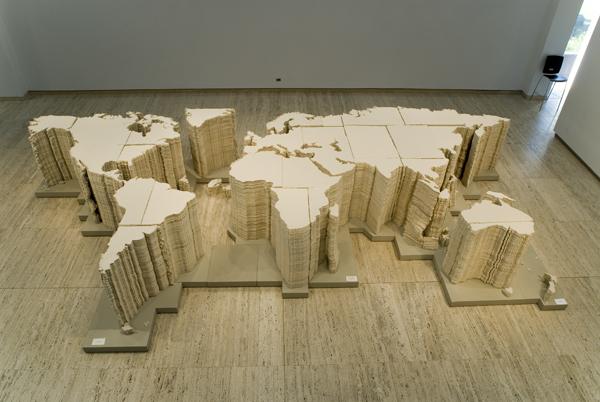POST FIFTEEN: X-AXIS PATTERN OF A T-SHIRT
In trying to take an cast of an adult size t-shirt which could then be cut into a stack of sliced pattern templates, I attempted to make another play-dough impression. The play-dough was to heavy as a material to hold the height of form adult proportions, and not stable enough.

The process became a matter of first taking a lot of measurement and photos of the embodied t-shirt on a mannequin. I chronologically started to cut of one layer of what would be a cut through the x-axis of the t-shirt. This ring of jersey was then re-shaped into shape it held when worn. This was placed on drafting paper where I could then trace it. This was done for a total of thirty ascending cut bands of the garment.
I would like to further explore carrying out this process using a 3D scan of a worn t-shirt, with another scan of a body placed inside. The worn space could perhaps then by sliced using a digital program such as rhino. I imagine the outcome would be a lot more accurate, and also it would allow me to explore a number of cutting combinations, which go beyond manual comprehension. Diagonal cuts, curved cuts, spherical and prism cuts, and different combinations of all these.
The cuts of the t-shirt result in three separate but relating forms. The central being the body, the second being embodied space between skin of body and inside wall of fabric, and the third being the all worldly space outside the wall of fabric. The act of wearing frames and posits the comprehension of all these spaces. By cutting up these boundaries and the space within them, a garment can be be given a new experience as a different type of spatial encapsulations and container. By changing the viewpoint and possibly scale of this, the usually felt personal space, can be seen and touched from a new position and view.
In the application of these patterns to an outcome, I have created another type of hanging sculpture. I took the third pattern of the space outside a garment and constructed it in separated layers of calico. It is kind of an object which in a way reverses the materialization of traditional wearing. The space outside the garment is given form in fabric, and the inside space of the garment embodiment line becomes an experiential hollow. The garment has been flipped (like in the double cardigan experiment) so the layer closest to the ground is the neck cut with the layer closest to the ceiling being the cardigan hem cut. The sculpture is interactive in a way similar to that of a garment. It is ‘put on’ and ‘worn’ in that the head goes through the neck hole. Wearing takes place from a different angle meaning the internals of the garment can be viewed. Space usually felt in now seen.
The outside of the form is a type of cube. It kind of looks like filo pastry. It is not recognizable as a cardigan from the outside - only the inside. This is a garment which has no connection or real functioning in how it looks from the outside - which a traditional fashion, commercial or runway garment does. The internals of the cardigan are a nice experience. Each stack of curvilinear edges gives you a faint impression and abstract recognizing of a garment space - the hollow of a sleeve, the gradual curve of a back.
Below are a couple of short videos of the hanging.










No comments:
Post a Comment